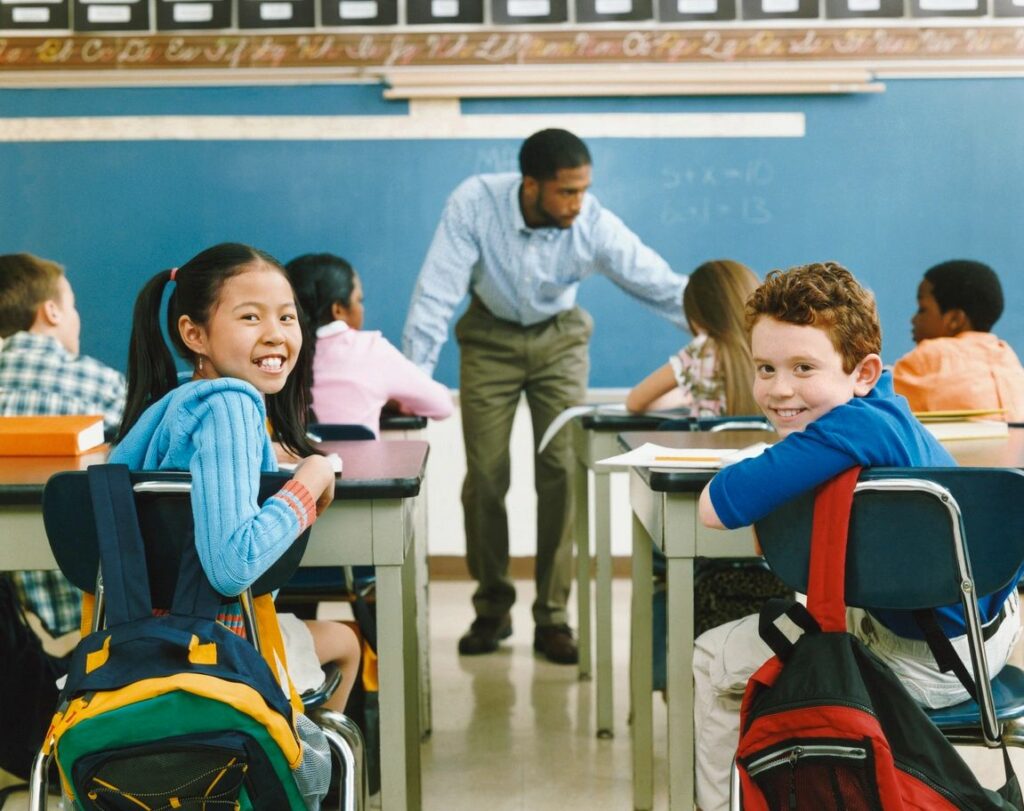- Oral work before written work – always! It is in oral work that language is tried, tested and acquired. Students should always work in pairs or groups for building complex answers. Read on for 15 more strategies!

Set up talking buddies in your lesson.
2. Visuals – carefully select these for cultural- and age-specific accessibility. Always use photos, never clip art. Clip art drawings can be very abstract and require another layer of cultural interpretation and inference before the language can be applied.

This…?

…or this? Which one would get you to produce more words?
3. Break things down into manageable chunks. Put less on a power point slide or on the page. Give one instruction. Give them take-up time. Come back. Give the next instruction or task. Little and often.
4. Give key words, key sentences – displays in class, homework, glossaries. Words, words, words! Give them what you want them to use. Quantify it. ‘I want a 3-5 word sentence that uses 2 new key words.’ Show an example. The clearer your language and context, the faster they learn it.
5. Compare multiple meanings of subject language, example cell in ICT or Biology, basin in Geography or Food Tech, source in History or Geography, reaction in Drama or Chemistry. Draw pupil attention to the various meanings in different contexts.
6. Structure spoken work that supports students at different levels. Give spoken sentence starters as well as written. “When you answer, you must start with ‘However, I disagree because…’ “
7. Model language – scaffold written tasks. Give sentence starters, paragraph topics and paragraph starters, the structure of a story or argument, opening and closing sentences. Let them use those until they are competent enough to come up with their own or at least to edit yours.
8. Clarity of instructions – layout, size of font, colour, logic of questions, numbering, modelling sheets to show what the class has to do. Layouts should be very clear with space or outlines to delineate each element. Only use two types of font in a document. If you highlight, bold, underline and italic, they will have no idea what to look at first! Keep it simple.
9. Concept checking – show a picture rather than explain. If they don’t understand English, how will they understand more words? Also, a picture will enable them to pull from their previous learning or life experience, giving you a foundation to build language upon.
10. Older learners still need support, even at GCSE Grade 3. Once they sound fluent, don’t assume that they no longer need support, particularly with higher-level written tasks or polishing of their oral English when doing presentations.
11. Practically involve the bilingual beginner in classroom activity in their silent period e.g. communicating, repeating learnt phrases relevant to subject, giving out or collecting books or sheets, buddying up with appropriate students. Don’t leave them out, just because they can’t speak yet.
12. Produce or find appropriate texts – Be aware of the level of language difficulty for a bilingual: grammatical (passive, long sentences, relative clauses), subject or experiential (cultural) assumed knowledge are barriers. Children’s books with child slang will not be appropriate. Give simple non-fiction instead.
13. Provide strategies for bilinguals to approach texts – sequencing, gap filling, true or false, headlines, colour-coding — anything that helps them separate out information-carrying words from the grammar that directs those words.
14. Reinforce concepts and words over a period of time – bilingual students will miss some of the facts and concepts the first time around.
15. Using audio and film – provide lessons and materials for students to go over again on their own e.g. make PowerPoint lessons available online in a student shared area or on-line education platform like Edmodo.
16. Use Google Images or Google Translate to give an idea of the thing, process, concept being taught: concept first, then language. Always find as many pictures of the topic or items mentioned in the story so the students can work on acquiring the flow of English. Otherwise they will get stuck on the noun they don’t know and miss everything else!